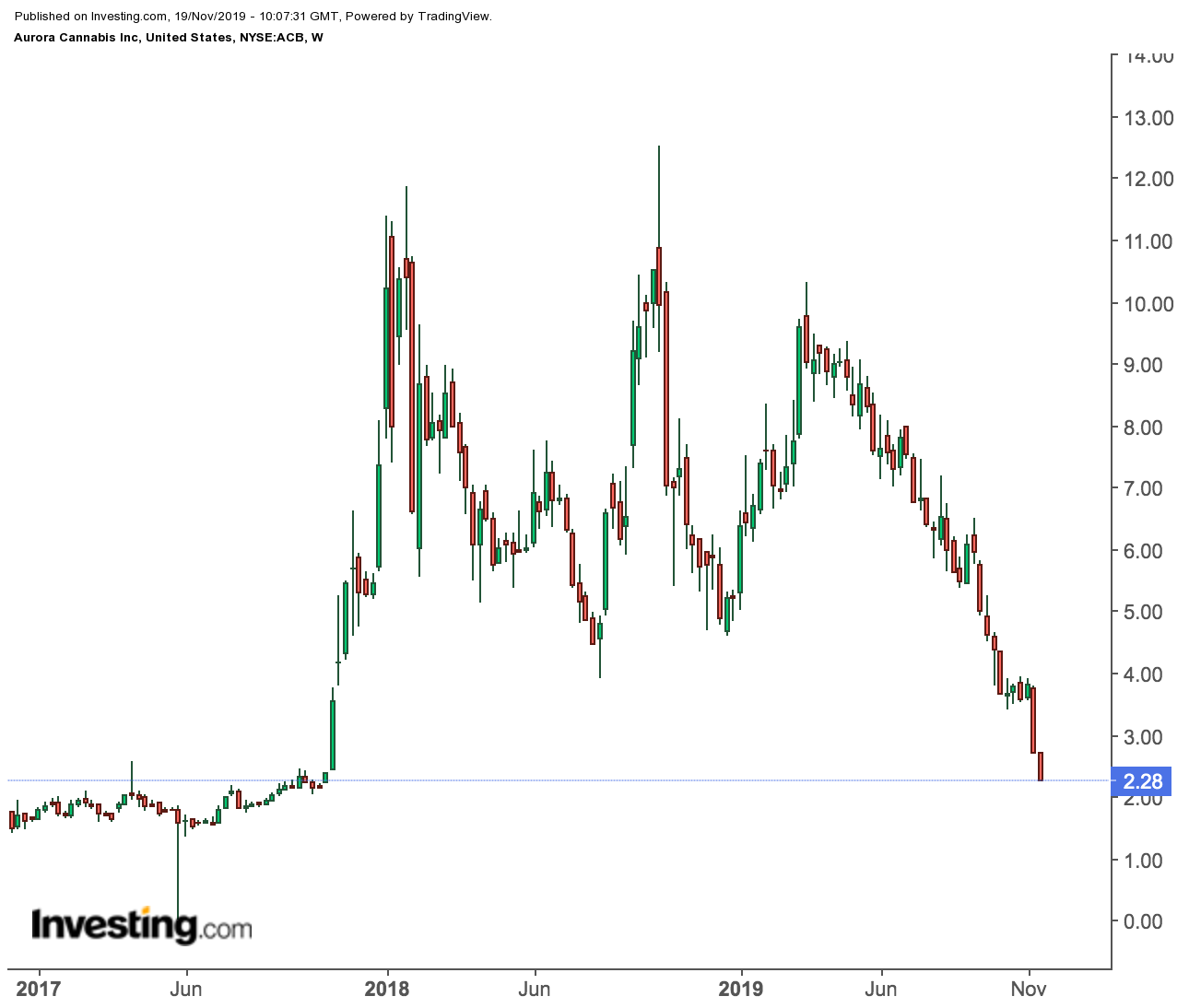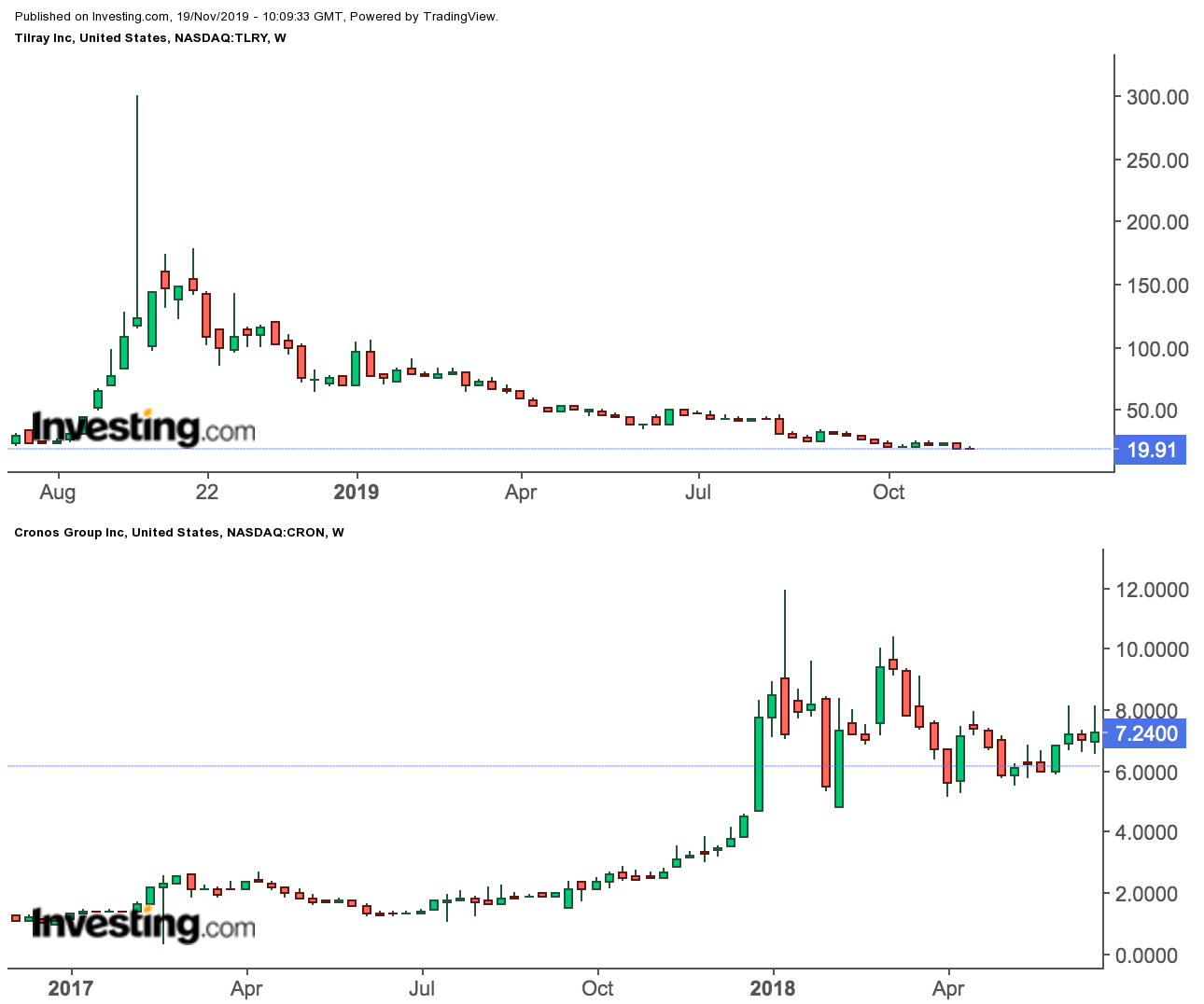Last week was like a bomb that hit the cannabis industry. By the time the dust settled, no less than $5 billion (C$6.6 billion) in market capitalization was wiped out from the value of the five biggest companies in the sector, according to estimates.
It also exposed serious fault lines that threaten to destabilize smaller companies. All of this is raising serious questions for investors and companies still trying to ramp up expansion and navigate the rollout of derivative products.
The extent of the destruction came into clearer view as the week progressed—a five-day period that saw the earnings reports of more than a dozen cannabis companies revealed. With each earnings report, the trend took sharper focus. Revenues were going down. Then, the questions began to surface. Where was all this headed?
Without any definitive answers available, investors began to flee.
In an interview with BNN Bloomberg, this is how one sector executive, Aurora Cannabis’ executive chairman Michael Singer, put it:
“What you’ve seen is a market that is uncertain on where to go from here."
Now, the overarching question is: Is the blood-letting over? Or, will it continue?
At the heart of the crisis, at least on the Canadian side of the border, is the delay in licensing retail outlets, especially in Ontario. This has created a bottleneck as companies have expanded their supply, while the legalized market could not service the demand from consumers, creating an oversupply that has put downward pressure on prices. All aspects of this—including, as a result, the ongoing competition with the black market—have manifested in weak corporate bottom lines.
So how has the landscape changed in the cannabis market in the last week? Let’s look at what happened to some of the companies that reported:
Canopy Growth:
Shares of Canopy Growth (NYSE:CGC), (TSX:WEED), the largest marijuana grower in the world, took a dive last Thursday after the Ontario-based company made public its latest earnings report that featured a C$374.6 milliion (US$283.68 million) net loss.
Net revenues totalled C$76.6 million (US$58.01 million), which was up from C$23.3 million (US$17.65 million) in the same quarter the previous year, but down significantly from the C$90.5 million (US$68.54 million) in the previous three-month period.

The company’s stock price responded immediately, dropping from the previous day’s close of US$18.50 (C$24.45) to end the day at US$15.70 (C$20.76), an approximate 15% drop. The drop in Canopy’s stock price continued Friday and Monday.
For the week, Canopy’s decline went from US$20.59 (C$27.25) to yesterday’s close of US$14.22 (C$18.77), a drop of about 31%.
Aurora Cannabis
Last Thursday, Aurora Cannabis (NYSE:ACB), (TSX:ACB), a major Canadian grower based in Edmonton, reported an EBITDA loss of C$39.7 million (US$30.06 million), a much larger shortfall than the C$26.6 million (US$20.14 million) loss in the previous three-month period and the anticipated target of a deficit of C$20 million (US$15.15 million).

Its share price has declined steadily ever since, going from US$3.57 (C$4.71) at the close the day before reporting on Nov. 13 to close yesterday at US$2.28 (C$3.00), a 35.8% drop.
Cronos Group and Tilray
Toronto-based cannabis producer Cronos Group (NASDAQ:CRON), (TSX:CRON) and west coast-based Tilray (NASDAQ:TLRY) were the only producers to report sales gains in their earnings reports, but that did not stop their share prices from taking a drubbing. Both companies reported last Tuesday.
Despite the jump in sales, Tilray still reported increased operating costs that doubled its loss in the third quarter loss to US$35.7 million (C$47.14 million) compared to US$18.7 million (C$24.69 million) the previous year.
Tilray stock went from US$21.57 to US$19.91, a 7.7% drop.

Over at the Cronos Group, the effect of its earnings report sent its stock from US$8.22 (C$10.86) to close yesterday at US$6.14 (C$8.15), a 25.3% drop.
Cronos, posted an adjusted EBITDA loss of $23.9 million (C$18.1 million).
